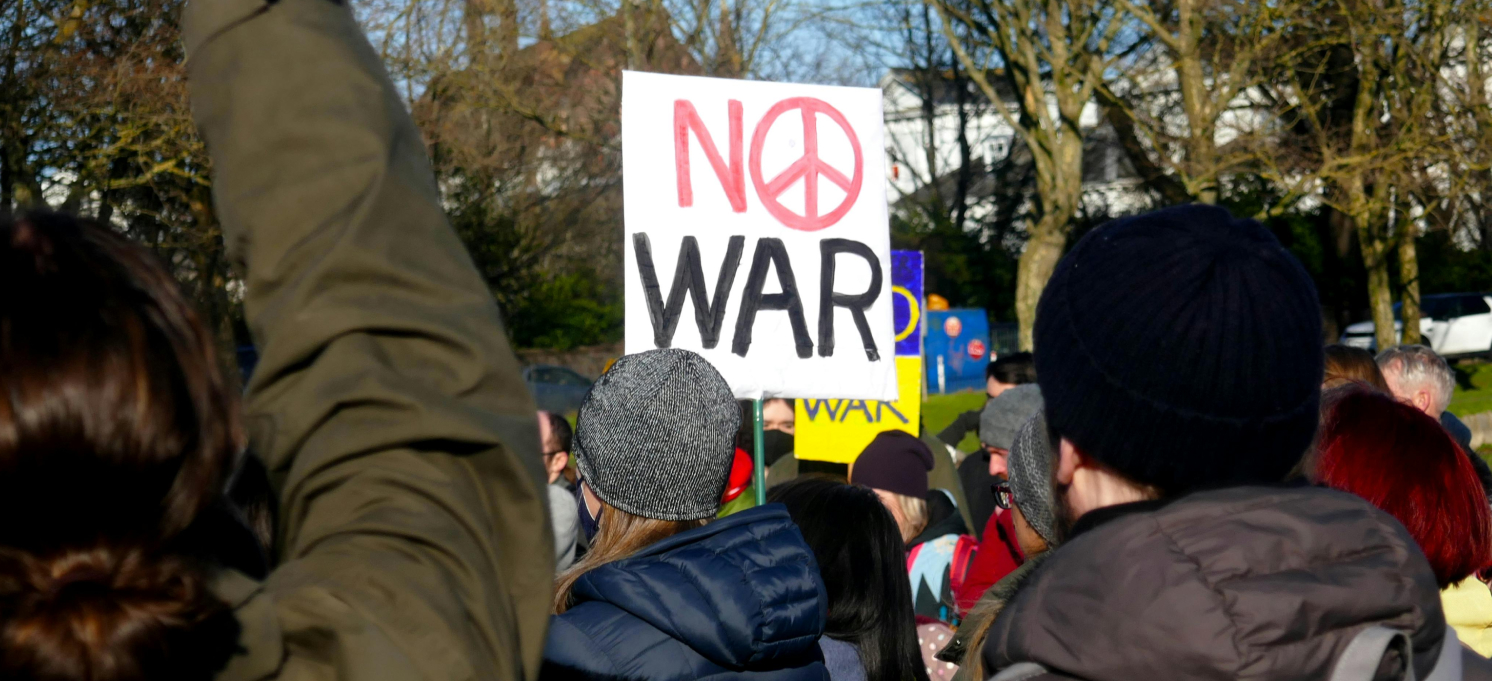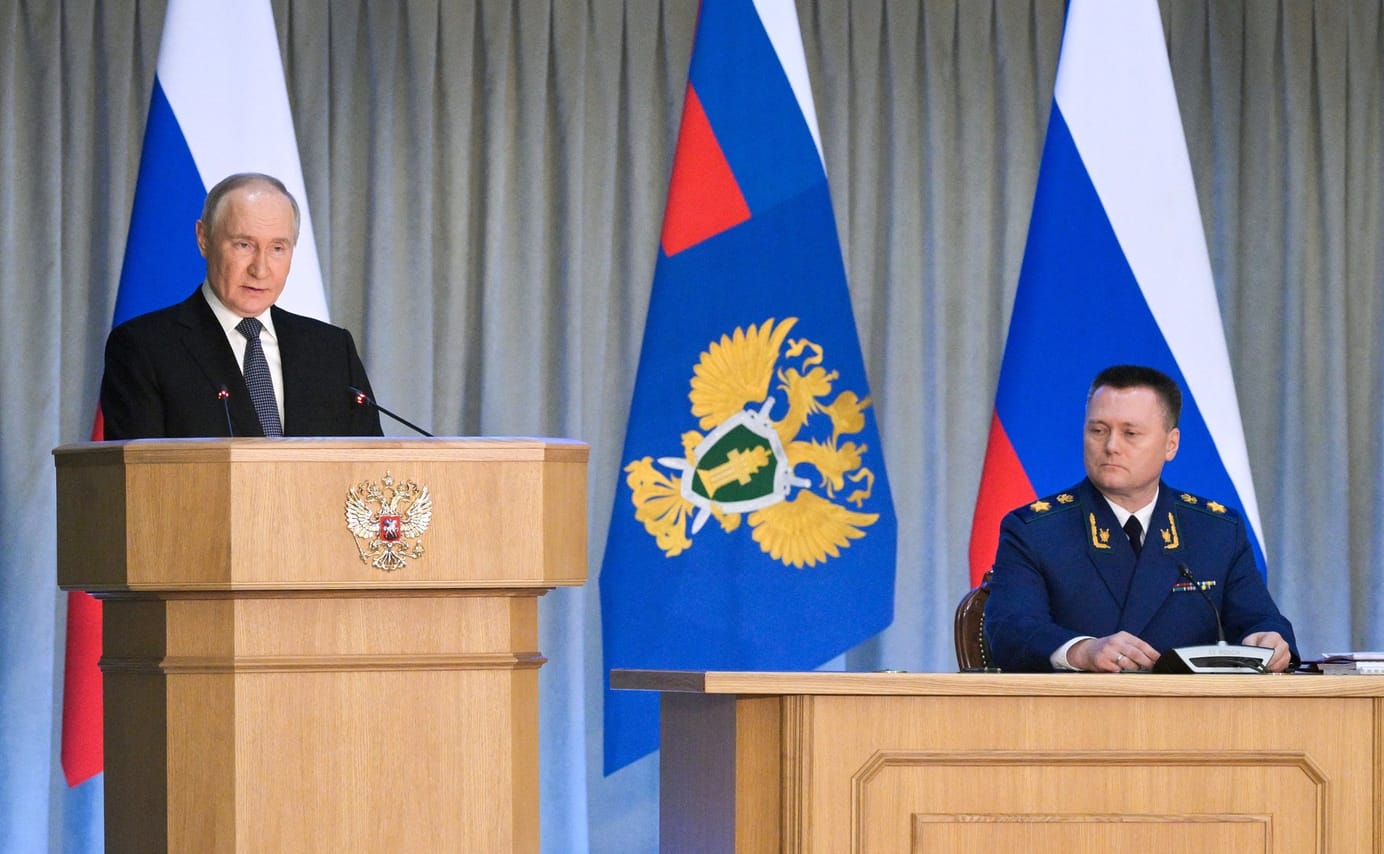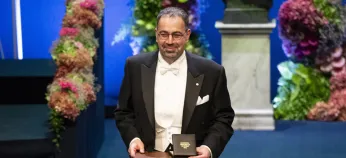
Is Russia’s economy addicted to military spending?
Hello! Welcome to your weekly guide to the Russian economy — written by Alexander Kolyandr and Alexandra Prokopenko and brought to you by The Bell. This week, our top story is an analysis of whether—and how—Russia’s economy could demilitarize in the event of a ceasefire in Ukraine. We also look at the deadly escalation of a dispute over control of Wildberries (sometimes dubbed “Russia’s Amazon”).
Demilitarization of Russia’s economy in the event of a truce in Ukraine
In one of our newsletters last year, we argued that the Russian economy had switched to a war footing. But how quickly could it revert to peacetime mode if the conflict in Ukraine was to come to an end? The answer, like many concerning Russia’s economy these days, depends a lot on how long the fighting continues.
What will happen to military spending?
The best way to illustrate the war’s role in Russia’s economy right now is the level of military spending. The Kremlin is currently committing more than a third of its entire budget (expenditure categorized as “National defense” and “National security”) to the war. In the first half of 2024, Russia spent 5.3 trillion rubles ($57 billion) on the war (in line with the 10.8 trillion rubles they plan to spend over the course of the whole year), according to Russian economy expert Janis Kluge. That’s up 60% on 2023, and triple pre-war annual spending.
At the moment, the Russian government is preparing its 2025 budget. A previous draft (issued in late 2023) assumed military spending would start to fall in 2025 (to 8.5 trillion rubles, then 7.4 trillion in 2026). However, this is very unlikely while the war continues. President Vladimir Putin listed Tuesday defense spending and the integration of occupied Ukrainian territory among his priorities for the upcoming budget. State development bank VEB.RF predicted last week that Russian military spending would rise.
Regardless of whether the war ends in a lasting peace, or a fragile ceasefire, Russia will have to rebuild its armed forces. At present, thanks to the large amount of Soviet kit in storage, Russia’s consumption of military equipment can vastly outstrip the arrival of new equipment. According to a recent study by Dara Massicot, an expert on the Russian army, the Kremlin might need up to 8 years to fully rebuild its military. Even without any ongoing fighting, military spending would need to remain high.
Further evidence that military expenditure is not likely to fall appeared this week in the form of a Kremlin decree published Monday that ordered the size of Russia’s armed forces to increase by 180,000 people – from 2.2 million people to 2.39 million people. All the increase will be in combatants—their numbers should rise to 1.5 million people. Before the war, the effective size of Russia’s armed forces was far less in reality than on paper. And to establish a genuine 1.5 million-strong standing army, Russia will need to double the size of its current military infrastructure, Massicot believes.
Where will Russia find the money?
Massicot sees two possible paths to rebuilding the army, depending on the Kremlin’s priorities. One is a rapid replenishment of personnel and weapons. That would require even greater mobilization of the economy than at present, and switching even more civilian production to military needs. The necessary expenditure for this sort of decision would be even greater if it was to happen during ongoing fighting.
The government still has options to find the money to increase military spending in this way: tax hikes and efficiency savings could generate an estimated additional 3 trillion rubles a year, the Central Bank calculated in August. Economic growth might bring a further 2 trillion rubles in tax (and this from non-oil-and-gas revenue sources). In addition, other major spending commitments could be put on hold: for example, infrastructure projects promised by Putin. Russia’s budget rules could also be relaxed.
This sort of approach would not be adversely affected by fluctuations in global financial markets, or short-term oil-price volatility. However, it would leave Russia more vulnerable to other external factors such as a long-term slump in oil prices, increased disbalance in its trade relationship with China or a serious tightening of Western sanctions. Any of these scenarios could seriously undermine Russia’s budget planning.
The other option for the Kremlin is a more conservative approach, according to Massicot. This would involve prioritizing social and economic stability, and rebuilding the military at a slower pace. The army itself would get smaller. However, this would only be possible if the war comes to an end, and the Kremlin forswears new military adventures.
In the more conservative scenario, the level of military spending could remain at its current level of up to 7% of GDP. But this would oblige the Kremlin to tacitly accept less military muscle—possibly while Western militaries are spending more. In other words, this is a scenario of reduced geopolitical confrontation—that might also involve an easing of some sanctions and restoring trade relations.
Both of Massicot’s scenarios can be aligned with scenarios put forward by the Central Bank in its recent Monetary Policy Review. Massicot’s conservative option would provide the conditions for the Bank’s baseline, or even optimistic projections, in which moderate spending would help reduce inflation. In this case, the Bank would be able to reduce its base rate faster and the economy would be able to grow in a more sustainable manner. In contrast, Massicot’s “mobilization” option fits with the Central Bank’s pessimistic scenario, opening the door to higher inflation combined with double-digit interest rates. Ultimately, this would cause economic stagnation—and possibly even a recession.
Why the world should care
Peace would not solve Russia’s accumulating economic problems. But political choices about foreign policy and the reconstitution of the army, could determine the direction the economy will take – from a relatively stable form of state capitalism to full mobilization and a high risk of crisis. So far, everything suggests that Putin will double down on the army, the navy and the defense sector—regardless of how the war plays out.
Wildberries conflict escalates into deadly shoot-out
The power struggle for control of Russia’s biggest online marketplace, Wildberries, escalated dramatically this week. What started out as a conflict between founders Tatyana and Vladislav Baklachuk (now divorced) has turned into a war between their patrons—billionaire Suleiman Kerimov and Chechen leader Ramzan Kadyrov. Vladislav Bakalchuk tried Wednesday to force his way into the company’s Moscow headquarters, accompanied by a team of bodyguards. The result was a shoot-out that left two people dead. Now, Vladislav Bakalchuk may well end up emerging as the loser in this corporate battle.
- Vladislav Bakalchuk and several dozen armed men turned up at Wildberries headquarters in the prestigious Romanov Dvor business center (just 300 meters from the Kremlin) on Wednesday afternoon. Before the full-scale invasion of Ukraine, the complex was home to Russian offices of major Western companies including news agency Bloomberg, investment bank Credit Suisse and IT giant Apple. In 2023, Wildberries moved into Apple’s old offices.
- It turned out that Wildberries security guards were waiting for Bakalchuk and his men. The result was a shoot-out that left seven people injured, and two Wildberries security guards dead. Events unfolded in front of dozens of police officers, who eventually managed to separate the conflicting parties.
- A total of 33 people were arrested, which gives you an idea of the size of the brawl. Among those detained was Vladislav Bakalchuk, who claims that his wife, Tatyana, with the support of Kerimov, has tricked him out of his 50% stake in the company. Bakalchuk sought support from Kadyrov.
- While almost everyone associated with Wildberries agrees Vladislav Bakalcuk was an equal partner with his wife, and played an equal role in the growth of the business, on paper he only ever owned 1% of the company. This became an issue when Tatyana Bakalchuk and Robert Mirzoyan (who represents Kerimov’s interests) agreed to merge their companies with Putin’s blessing. Although the law does not require presidential approval for such a merger, it is considered good form. To secure Putin’s blessing, the partners composed a letter detailing fantastic plans to make Wildberries into an international rival to Google and Amazon. Putin endorsed the proposal and appointed his economic aide, Maxim Oreshkin, to oversee the project. Now, however, neither Oreshkin nor Putin’s press secretary Dmitry Peskov will comment on the conflict.
- After the shoot-out, Vladislav Bakalchuk’s hopes of winning this corporate show-down appear to be almost nil. He must now figure out how to escape a prison sentence (he has been charged with both murder, and the attempted murder of a law enforcement officer). Perhaps unsurprisingly, Bakalchuk walked free late Friday evening—apparently without any restrictions. It seems likely his patron Kadyrov was able to pull some strings. Bakalchuk immediately started posting messages addressed to his former wife on social media.
Why the world should care
The gun battle in central Moscow led people in Russia to make comparisons with the 1990s when corporate murders were almost routine. There is a certain similarity. However, the key difference is that back then Russia’s institutions were in a post-Communist flux. That’s not the case in 2024. Over more than two decades in power, Putin has gradually turned himself into the ultimate guarantor of all property rights in Russia. The Wildberries conflict shows what happens when Putin absents himself.
Figures of the week
The government is discussing an increase in the “voluntary contribution” from departing foreign businesses to 40% of their market value. At present, the contribution is about 15%. First and foremost, this means that deals for symbolic sums in which local managers take temporary control of companies will no longer be attractive. It will be more profitable to keep hold of assets. The government has already received 140 billion rubles in such contributions since the start of the year (last year, the figure was 117 billion rubles).
The share of international payments settled in Chinese yuan fell to 4.5% in August down from 4.69% in July, according to data from payments system SWIFT. In June, the share was 4.74%. The yuan remains in fourth place for global settlements. While the U.S. dollar’s share went up from 47.81% to 49.07%, the share of both the euro and sterling declined slightly. A possible explanation for the yuan’s stumble could be difficulties in payments between Russian and Chinese companies caused by Western sanctions.
Weekly inflation in Russia between Sept. 10 and Sept. 16 rose to 0.1% (from 0.09% a week earlier), according to the Ministry of Economic Development. Annual inflation over the same period slowed from 8.85% to 8.74%.
Inflation expectations among the Russian public in September fell to 12.5% from 12.9%a month earlier, almost returning to July’s level (12.4%), according to a Central Bank survey. Despite this weakening of inflation expectations, the figure remains high. This will likely be taken into account when the bank next reviews interest rates.
Further reading
Russian Military Reconstitution: 2030 Pathways and Prospects
West Seeks to Increase the Costs of Russia Sanctions Evasion
Have President Tokayev’s Reforms Delivered a “New Kazakhstan”?





